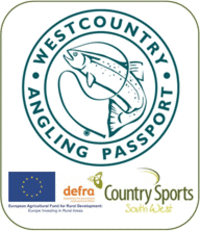Many thanks to Pat at Murch's Antiques Emporium for facilitating this camera's location and to the Westcountry Rivers Trust & River Taw Fisheries Association for capitally funding its installation.The Site of Farson Digital's second webcam, is this great view of Umberleigh Bridge in North Devon as it crosses the River Taw. The Rising Sun Inn is in the backround of the picture, this is one of the most famous fishing Inn's in the UK. It was in the bar of the Inn, that the conversation took place which spawned the creation of Farson Digital Water Cams. Many thanks to Murch's Antiques Emporium for providing a superb location for the camera. The River Taw, pronounced /tɔː/, originates from Taw Head, a spring located on the central northern slopes of Dartmoor. It traverses North Devon and, upon reaching the town of Barnstaple, which was historically a significant port, it flows into Bideford Bay within the Bristol Channel. Along its course, the river forms a wide estuary with meandering bends, and at its western end, it combines with the River Torridge.Initially, the Taw flows northward and lends its name to the villages of South Tawton and North Tawton. As it progresses, its volume increases from the contributions of two primary tributaries in the upper section: the Lapford Yeo and the Little Dart River. Moving along the middle course, the Taw is joined by the River Mole, which is a distributary of the River Bray, as well as a second Yeo. These rivers, all originating from the elevated terrain of Exmoor to the northeast, further enhance the Taw's size. By this point, the river has grown significantly and offers year-round recreational opportunities for trout, sea trout, and salmon fishing. It transitions into a tidal river near Newbridge, approximately 19 km (12 mi) from its mouth.The Taw drains a variable-width basin, as it is one of many rivers within the predominantly agricultural county. The river flows through a picturesque valley, characterized by a mix of animal pastures, cultivated fields, and woodland, with the frequency of occurrence following that order. Its total length spans approximately 72 km (45 mi).
The Tarka Trail, named after the literary character Tarka the Otter, largely follows the course of the River Taw. The river is renowned for its salmon and sea trout fishing, which contributes to its esteemed reputation. Additionally, the upper reaches of the system provide excellent opportunities for brown trout fishing.






